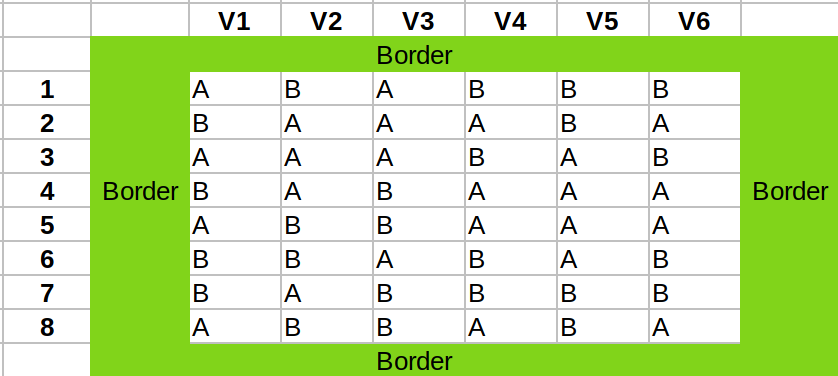I found variations in the greenhouse could be very big and I really should use a proper randomized experimental design to minimize confusion. This is the biggest lesson I learned this week.
My experiment is very simple: evaluate two NILs to see whether their spikelet number is significantly different. I did not think too much and just planted like the layout below:

I want to use Randomized Complete Block Design (RCBD) to analyze it, but I did not randomize the genotypes (A and B): A is always on one column and B is always on one column; A is always on the left of B. From the results above, we can see that there are also border effects: the most left (V1) has the highest spikelet number and the most right (V6), which is close to the walkway facing south, has the lowest number of spikelet number.
So now I have to exclude the most left and the most right columns from the data analysis. Since B is always on the right of A, I do not know whether the gradient affects the spikelet number. Next time, I would strictly design my experiment with a proper experimental design (RCBD here). I will use each column a block and randomize the two genotype in each block, something like below:

I will also add borders to all the directions.
In addition to a good experiment design, if you want good data, please use a bench in the middle of the greenhouse. Do not use benches too close to the cooling pad, the fan, or the door, where there are more variations.